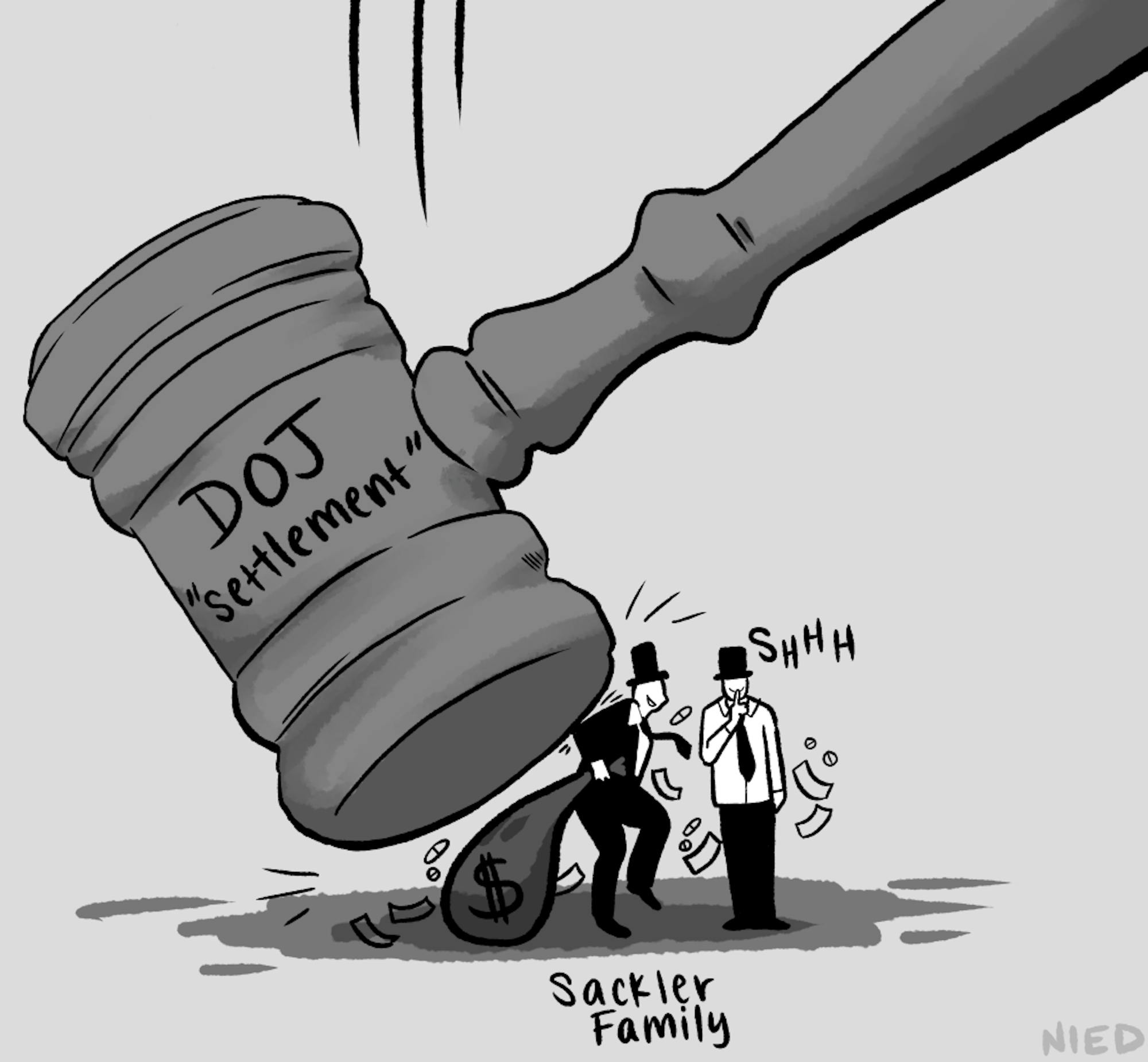In 1971, former President Richard Nixon labeled drug use a national emergency and asked for $155 million to combat it, beginning the war on drugs. This war has been characterized by aggressive police response and highly punitive measures. Meanwhile, in 1996, Purdue Pharma released the prescription opioid OxyContin, a drug that would initiate an ongoing epidemic that has killed over 500,000 people and has torn families and communities apart.
One key aspect of the war on drugs has been its disproportionate effect on people and communities of color, both directly and indirectly.
Under the 1986 Anti-Drug Abuse Act, a five-year minimum penalty was enacted for individuals possessing just five grams of crack cocaine, a version of cocaine with a lower price point more commonly used in low-income communities and Black communities. In comparison, the same minimum penalty was only applied for the possession of 500 grams of powder cocaine which was much more prevalent in wealthier, white communities. This contradiction landed many more Black people in jail, despite the fact that crack and powder cocaine are chemically equivalent.
This act was amended nine years later, but with the disparity in grams necessary for minimum penalty going from a ratio of 100:1 to 18:1, many people who were incarcerated during this time were not able to receive shortened or overturned sentences. Nearly half of all inmates in federal prisons and one-fifth of inmates in the U.S. are incarcerated for drug-related charges, withBlack Americans being six times more likely than white Americans to be arrested on drug-related charges, despite no disparity in drug use.
Additionally, this war-like approach to solving our nation’s drug problem was the beginning of the Department of Defense’s 1033 Program, which outfits state and local law enforcement with surplus military equipment. While originally created for counterdrug activities, it was later used for counterterrorism goals, exacerbating incidents of police brutality.
Breonna Taylor was killed in a botched drug raid. Neither she nor her boyfriend, who was also present, were suspects in the case the officers were working on, yet the police still burst into her apartment in the dead of night. In Derek Chauvin’s trial for the murder of George Floyd, the defense tried to argue that Chauvin’s use of force was justified due to trace amounts of fentanyl found in Floyd’s blood that, they argued, made his behavior unpredictable, despite video evidence that he did not resist. These incidents and countless others show the racial disparity in how drug use is seen and addressed, as well as the incredible harm police officers armed as soldiers can do.
Nowhere is the failure of the war on drugs clearer than in the opioid epidemic. Many different drugs have contributed to the epidemic, but one company — and one family — has undoubtedly had an outsized impact.
The company that eventually became Purdue Pharma has been owned by the Sackler family since 1952. The family has made approximately $10 billion between 2008 and 2017 from Purdue Pharma. The company cannot act alone as it dos what those who control it intend for it to do — which means the Sackler family must be held responsible for the harm it has caused. Many family members were high-level employees or board members of the company, including Richard Sackler as the president for years, Kathe Sackler as an officer and David Sackler as a former board member.
The Sacklers also own Mundipharma, Purdue’s international affiliate, which sells Nyxoid, a naloxone nasal spray that can save people from opioid overdoses. The Sacklers created a deadly addictive drug, made $10 billion off of it and are also making money off of its cure.
Last November, following years of countless lawsuits, Purdue Pharma pled guilty to three felonies, including fraud. In July, a new settlement was filed by the U.S. Bankruptcy Court in White Plains, N.Y. This settlement requires Purdue Pharma to be reorganized and refocused on battling the opioid epidemic, while forcing the Sacklers to pay $4.3 billion and making many internal Purdue documents public.
This appears to be a great victory — but the biggest perpetrators essentially get off scot free. The Sacklers, whose name is on a Smithsonian building and a wing of the Met, are not charged in this settlement. It also contains a non-consensual third party release, meaning that if this goes through, all current and future lawsuits against those named, which includes various Sackler family members and companies, would be erased.
The Department of Justice has said that this violates the Constitution and the federal government, and eight states, including the District of Columbia, oppose the settlement. Even the $4.3 billion the Sacklers must pay is a cold comfort, as their net worth is believed to be around $11 billion. It is likely they would be able to pay the $4.3 billion over the nine years allowed by the settlement from interest alone.
Clearly, the government has criminalized the wrong people in the war on drugs. Users who fell prey to predatory drug companies have been incarcerated, while the billionaires who led those companies get to keep their billions. This cannot stand. As reported in the Daily last week, the Somerville City Council has proposed a restitution fund for residents who have been harmed by the war on drugs. The DOJ also moved to block the Purdue Pharma settlement.
Other local and state governments, as well as the federal government, should follow Somerville’s example and offer restitution to those whose lives have been taken or destroyed by the war on drugs. They must ensure that we do not let the Sackler family get away with the pain and destruction that they have caused for countless American families and communities.






